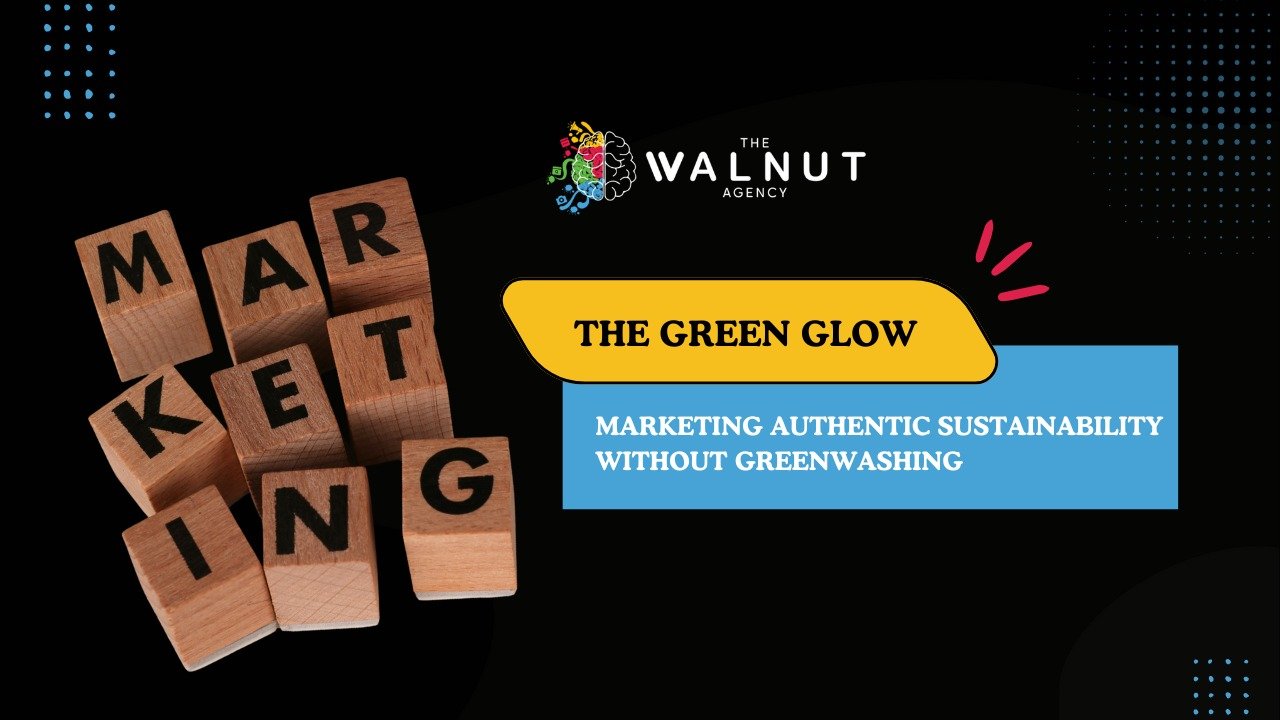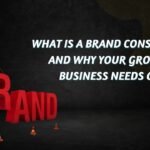The Green Glow: Marketing Authentic Sustainability Without Greenwashing

Walk down any supermarket aisle or scroll through any social feed, and you’ll see it: the “Green Glow.” Leaves on packaging. Words like “eco-friendly,” “natural,” and “planet-positive.” It seems every brand has suddenly found its environmental conscience.
But here’s the uncomfortable truth: consumers have become sceptics. They’ve been burned by vague claims and empty gestures. They can spot inauthenticity from a mile away. This practice, known as greenwashing, doesn’t just make your marketing ineffective—it actively damages your brand’s reputation.
So, how do you talk about your genuine sustainability efforts without sounding like just another brand jumping on the bandwagon? How do you shine a light on your real progress without getting lost in the green-hued noise?
The answer isn’t to stay silent. It’s to shift from greenwashing to truth-telling. It’s about building a sustainability story that is so authentic, so transparent, and so integrated into your business that it becomes your brand’s backbone, not just its banner.
Why Greenwashing is a Dead-End Strategy
Greenwashing is the disconnect between what a brand says and what it actually does. It’s making a grand claim about being “100% sustainable” while your supply chain tells a different story. And consumers, armed with smartphones and a healthy dose of cynicism, are calling it out.
The risks are immense:
- Erosion of Trust: Once lost, trust is incredibly difficult to regain.
- Legal Repercussions: Regulators worldwide are cracking down on unsubstantiated environmental claims.
- Consumer Backlash: A single exposed inconsistency can lead to a viral PR nightmare.
The old model of “say what they want to hear” is broken. The new model is “be what they hope you are.”
The Pillars of Authentic Sustainable Marketing
Authenticity isn’t a marketing tactic; it’s the result of a business-wide commitment. Your communication should be the final step, not the first. Build your story on these four pillars:
1. Action Before Advertisement
This is the golden rule. You must do the work before you talk about the work.
- Integrate, Don’t Bolt-On: Sustainability cannot be a separate CSR (Corporate Social Responsibility) initiative managed by one person. It must be woven into your operations, from sourcing and manufacturing to packaging and shipping.
- Set Measurable Goals: Don’t just say you want to “be more sustainable.” Set specific, measurable, and time-bound goals. “Achieve 100% renewable energy in our warehouses by 2026” or “Reduce virgin plastic use in packaging by 50% within 18 months.” This gives you something real to talk about.
2. Radical Transparency
In a world of greenwashing, transparency is your superpower. Be open about your journey, including the challenges.
- Share Your Progress, Not Just Your Successes: Did you miss a sustainability target? Talk about it. Explain what you learned and how you’re adjusting your strategy. This humanises your brand and shows you’re genuinely committed, not just perfect.
- Explain the “Why” Behind Your Choices: Why did you choose this specific recycled material? Why is that supplier better? Educating your audience on the complexities shows depth and expertise. This builds a much stronger brand strategy than a simple “we’re green” label.
3. Specificity Over Vagueness
Vague claims are the hallmark of greenwashing. Authenticity lives in the details.
- Swap: “Eco-friendly packaging” → “Packaging made from 100% post-consumer recycled cardboard, biodegradable with home composting.”
- Swap: “We care about the planet” → “We partner with One Tree Planted to plant a tree for every order, helping to restore the Amazon rainforest.”
- Use Certifications Wisely: Certifications like B Corp, Fair Trade, or Soil Association are valuable because they are third-party verified. They give weight to your claims. But only use them if you truly embody their principles.
4. Focus on the Collective Impact
Frame your sustainability not as a heroic solo mission, but as a collaborative effort where your customer plays a vital role.
- “You Make This Possible”: Instead of “We’ve reduced our carbon footprint,” try “By choosing our products, you’ve helped us save X tons of CO2 this year.” This makes the customer a partner in your mission, fostering a powerful sense of community and shared purpose.
A Practical Guide to Communicating Your Green Credentials
Once your actions are in place, here’s how to talk about them effectively across your marketing channels:
1. Your Website: Create a “Our Impact” Hub
Don’t hide your sustainability story in an obscure page. Give it pride of place. Use this space to showcase your goals, your progress (with real data and visuals), your partnerships, and your team’s story. This should be the go-to source for anyone wanting to learn about your commitment.
2. Social Media: Show, Don’t Just Tell
Use the power of visual storytelling.
- Behind-the-Scenes: Show your packaging being filled with recycled materials. Interview the founder of your ethical supplier.
- Educate: Create short videos explaining a complex sustainability issue in your industry.
- User-Generated Content: Encourage customers to show how they reuse your packaging or incorporate your product into their own sustainable lifestyle.
3. Product Packaging: Your Silent Salesperson
Your packaging is a tangible touchpoint. Use it to communicate your values clearly and specifically. Include a small note about the materials used and how to properly dispose of or repurpose them.
The Final Litmus Test: Would Your Grandma Believe It?
Before you publish any sustainability claim, run it through this simple test: Is it so simple, specific, and honest that you could say it to your grandma without having to follow up with a bunch of explanations and caveats?
If not, it’s probably veering into greenwashing territory.
The Green Glow is Earned, Not Applied
The future of marketing belongs to the authentic. The “Green Glow” that consumers are truly drawn to isn’t a filter; it’s the radiance of a brand that is genuinely trying to do better. It’s the glow of integrity.
It’s about understanding that sustainability is a journey of continuous improvement, not a final destination. By leading with action, embracing transparency, and speaking with specificity, you won’t just avoid greenwashing—you’ll build a brand that people trust, respect, and champion.
And that is a glow that no amount of marketing budget can buy.
Ready to build a marketing strategy rooted in authenticity? The Walnut Agency helps brands tell their true stories. Contact us to communicate your values with clarity and build lasting trust with your audience.



